

E-Books → The Literature of Terror A History of Gothic Fictions from 1765 to the Present Day by David Punt...
Published by: Emperor2011 on 28-10-2023, 21:30 |  0
0

The Literature of Terror A History of Gothic Fictions from 1765 to the Present Day by David Punter PDF | 8.31 MB
N/A | 248 Pages
Title: The Literature of Terror: A History of Gothic Fictions from 1765 to the Present Day, Volume 1: The Gothic Tradition
Author: Punter, David
Year: N/A
E-Books → Twenty-First-Century Gothic An Edinburgh Companion by Xavier Aldana Reyes PDF
Published by: Emperor2011 on 28-10-2023, 21:27 |  0
0

Twenty-First-Century Gothic An Edinburgh Companion by Xavier Aldana Reyes PDF | 7.21 MB
N/A | 330 Pages
Title: Front Matter
Author: Maisha Wester, Xavier Aldana Reyes
Year: 2019
E-Books → Gothic A History by Lol Tolhurst
Published by: Emperor2011 on 19-10-2023, 20:14 |  0
0

Gothic A History by Lol Tolhurst | 13.04 MB
English | N/A Pages
Title: Goth
Author: Lol Tolhurst
Year: 2023
E-Books → Neo-Victorian Gothic Horror, Violence and Degeneration in the Re-Imagined Nineteenth Century
Published by: voska89 on 30-03-2023, 05:10 |  0
0
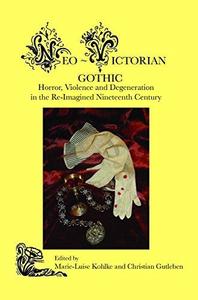
Free Download Neo-Victorian Gothic: Horror, Violence and Degeneration in the Re-Imagined Nineteenth Century By Marie-Luise Kohlke, Christian Gutleben
2012 | 340 Pages | ISBN: 9042036257 | PDF | 6 MB
This volume, the third in Rodopi's Neo-Victorian Series, reassesses neo-Victorianism as a quintessentially Gothic movement. Through their revival of bygone spectres, their obsession with forgotten skeletons in the cupboard, and their exploration of nineteenth-century extremities, neo-Victorian works not only reflect our contemporary Gothic culture but also reactivate it and even enrich it with new variations such as postcolonial, eco or steampunk Gothic. Addressed to scholars and students of both Gothic and Neo-Victorian Studies, this volume will also interest contemporary literature specialists, cultural theorists, and those working on popular historical memory, as it explores the paradox of culture's coincident turn to ethics and sensationalism. As exemplified in its generic variety and hybridity, neo-Victorian Gothic resorts to the spectacularisation of horror while simultaneously demonstrating the hyperreal, textual and self-reflexive nature of these spectacles, just as it resorts to the exploitation of hyperbolic and violent sexuality at the same time as challenging sexual norms and identity politics. In spite of these apparent contradictions, the Gothic forms of neo-Victorianism demonstrate their fundamentally ethical goal of interrogating the uncertain limits between self and other, orthodoxy and heterodoxy, past and present.Tags: Modern, English; Irish; Scottish; Welsh, European, 19th Century, Literary Criticism, Gothic & Romance, History
E-Books → Canadian Gothic Literature, History, and the Spectre of Self-Invention
Published by: voska89 on 25-03-2023, 01:18 |  0
0
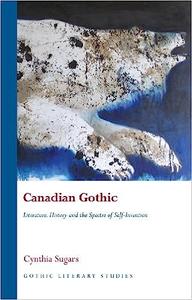
Free Download Cynthia Sugars, "Canadian Gothic: Literature, History, and the Spectre of Self-Invention "
English | ISBN: 0708327001 | 2014 | 291 pages | PDF | 4 MB
In Canadian Gothic, Cynthia Sugars explores the origins and history of the Canadian gothic tradition, tracing the ways that the gothic genre has been reinvented for a specifically Canadian context. Sugars demonstrates how, from very early on, the Gothic has held a precarious position in Canadian literature. Canada had long been perceived as an empty terrain unhaunted by a historical tradition and incapable of inspiring ghosts or gothic tales. Sugars argues instead that many Canadian writers have created a distinctly Canadian Gothic, one expressed in a postcolonial context and found in early aboriginal and diasporic writings. Among the authors she discusses are Dionne Brand, David Chariandy, Wayson Choy, Hiromi Goto, Suzette Mayr, and Michael Ondaatje.
E-Books → Assault on the Gothic Line 1944 The Allied Attempted Breakthrough into Northern Italy
Published by: voska89 on 25-03-2023, 00:45 |  0
0
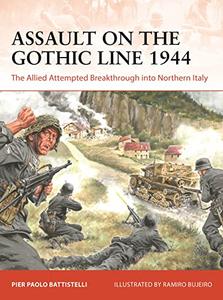
Free Download Assault on the Gothic Line 1944
by Battistelli, Pier-Paolo;Bujeiro, Ramiro;, Ramiro Bujeiro
English | 2023 | ISBN: 1472850149 | 97 pages | True PDF EPUB | 42.72 MB
E-Books → Gothic Animals Uncanny Otherness and the Animal With-Out
Published by: voska89 on 28-02-2023, 22:30 |  0
0
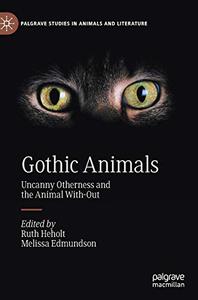
Free Download Gothic Animals: Uncanny Otherness and the Animal With-Out by Ruth Heholt, Melissa Edmundson
English | EPUB (True) | 2020 | 309 Pages | ISBN : 3030345394 | 4.3 MB
This book begins with the assumption that the presence of non-human creatures causes an always-already uncanny rift in human assumptions about reality. Exploring the dark side of animal nature and the 'otherness' of animals as viewed by humans, and employing cutting-edge theory on non-human animals, eco-criticism, literary and cultural theory, this book takes the Gothic genre into new territory.
E-Books → Haunted Property Slavery and the Gothic
Published by: voska89 on 26-02-2023, 15:14 |  0
0
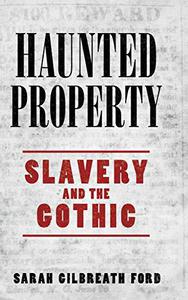
Haunted Property: Slavery and the Gothic By Sarah Gilbreath Ford
2020 | 248 Pages | ISBN: 1496829697 | PDF | 3 MB
At the heart of America's slave system was the legal definition of people as property. While property ownership is a cornerstone of the American dream, the status of enslaved people supplies a contrasting American nightmare. Sarah Gilbreath Ford considers how writers in works from nineteenth-century slave narratives to twenty-first-century poetry employ gothic tools, such as ghosts and haunted houses, to portray the horrors of this nightmare. Haunted Property: Slavery and the Gothic thus reimagines the southern gothic, which has too often been simply equated with the macabre or grotesque and then dismissed as regional. Although literary critics have argued that the American gothic is driven by the nation's history of racial injustice, what is missing in this critical conversation is the key role of property. Ford argues that out of all of slavery's perils, the definition of people as property is the central impetus for haunting because it allows the perpetration of all other terrors. Property becomes the engine for the white accumulation of wealth and power fueled by the destruction of black personhood. Specters often linger, however, to claim title, and Ford argues that haunting can be a bid for property ownership. Through examining works by Harriet Jacobs, Hannah Crafts, Mark Twain, Herman Melville, Sherley Anne Williams, William Faulkner, Eudora Welty, Toni Morrison, Octavia Butler, and Natasha Trethewey, Ford reveals how writers can use the gothic to combat legal possession with spectral possession.
E-Books → Gothic Halloween A Scary Adult Coloring Book
Published by: voska89 on 25-02-2023, 09:19 |  0
0
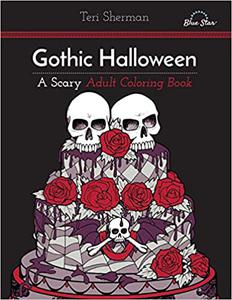
Blue Star Coloring, Teri Sherman, "Gothic Halloween: A Scary Adult Coloring Book"
English | 2015 | ISBN: 1941325440 | 76 pages | True PDF | 13.4 MB
Trick or Treat!
E-Books → Gothic Chapbooks, Bluebooks and Shilling Shockers, 1797-1830
Published by: voska89 on 16-02-2023, 06:51 |  0
0
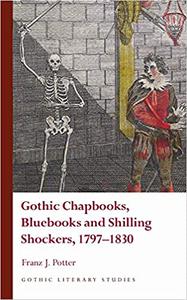
Franz J. Potter, "Gothic Chapbooks, Bluebooks and Shilling Shockers, 1797-1830 "
English | ISBN: 178683670X | 2021 | 240 pages | EPUB | 2 MB
The Gothic Chapbook, Bluebook, and Shilling Shocker, 1797-1830 breaks new ground surveying the origins of the gothic chapbook, its publishers, and authors, in order to conclusively establish the impact these pamphlets had on the development of the gothic genre. Considered the illegitimate offspring of the gothic novel, the lowly chapbook flooded the marketplace in the late eighteenth century, creating a separate and distinct secondary market for tales of terror. The trade was driven by a handful of individuals who were booksellers and dealers, circulating library proprietors, stationers, and small publishers who produced well over four hundred chapbooks, bluebooks and shilling shockers containing gothic tales from magazines, redactions of popular novels, extractions of entire inset tales, and original tales of terror. This study responds to the urgent and pressing need to contextualize the gothic chapbook in ascertaining a more concise and comprehensive view of the entire gothic genre.



